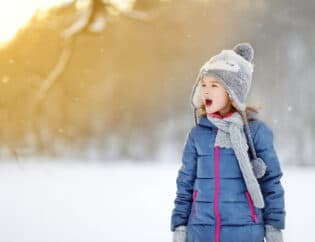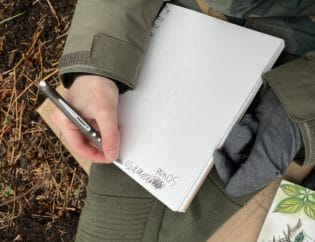
Seed Bombs. These words are sure to get your child excited enough to put down the ipad.
If you want beautiful, abundant wildflowers for your kids to marvel at in the spring, simply scattering native seeds around in the fall and winter might not do the trick. And you might be surprised to learn that a very small percentage of the seeds that a plant produces actually make it to adulthood – often no more than 1%. A great and fun solution? Enter the seed bomb!
Seed bombs were once used by Native American and Japanese gardeners, and today are used widely around the world. Seed bombs are clay and organic matter mixed with water into a kind of dough that is wrapped around seeds. The layer of "dough" provides the seeds with a bit more protection from drying out.
The first step in making seed bombs is to gather your materials. You will need clay, organic matter, and seeds. Making sure your seed bombs are made with native plant seeds is crucial as native plants are getting pushed out by invasives or development. Your child can harvest seeds from plants or you can buy wildflower seeds.

Once you have your seeds, the fun begins! Your child gets to mix it all up! Mix equal parts compost or potting soil with clay (potters clay or cat litter clay with no added chemicals) with a little bit of water until you have a dough that sticks together but is not soggy. Roll the mixture into pea-size balls for small seeds and press your finger into the ball to create a bowl shape. This is where you will place a pinch of seed. For large seeds like milkweed, use 3 seeds; for small seeds, a pinch will do. Gently roll the seed into the inside of the ball and set aside. If you are using large seeds such as acorns, you will need a golf ball size bomb. Seeds from maple, ash or wild cherry will need a ball the size of a grape. The seed bombs can be left out for a couple of hours to firm up, but you do not want them to dry out inside. Learn more here.
The seed bombs should then be stored in a plastic bag in the refrigerator until you are ready to launch them into the world. Seed bombs can be tossed these into abandoned lots, deforested land, roadsides and other places that could use some help restoring native vegetation.
When to plan a "bombs away" day with your kids? According to Heather McCargo, the executive director of the Wild Seed Project, fall and winter are the times to think about sowing native seeds. “It turns out these seeds love being sown outdoors in the fall and winter. They can endure winter and ice storms. They can freeze and melt. They actually love all that.”
Need more instruction? Here are a downloadable recipe and activity sheet from education.com.











